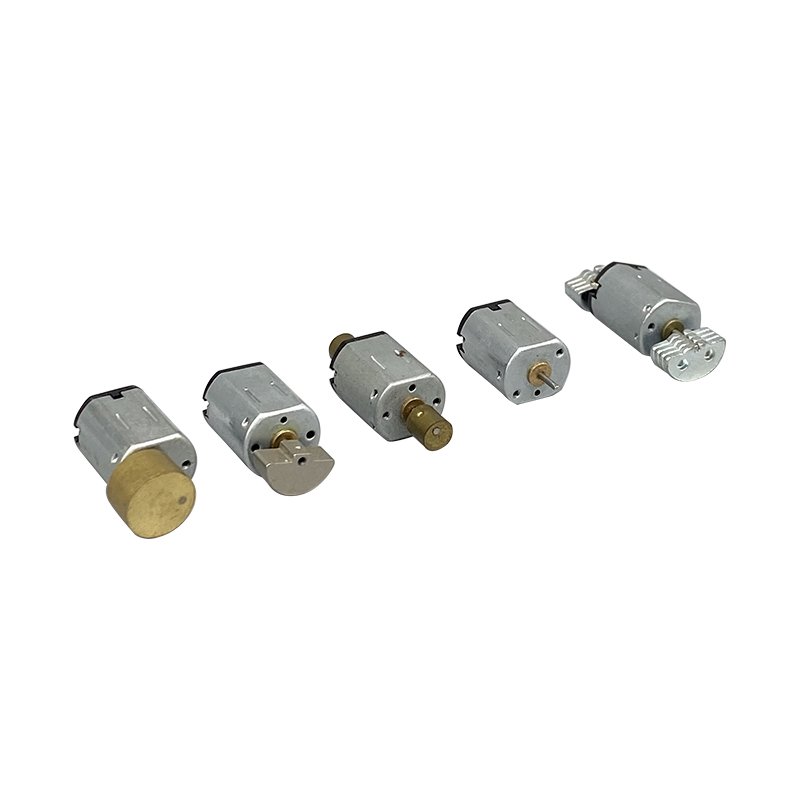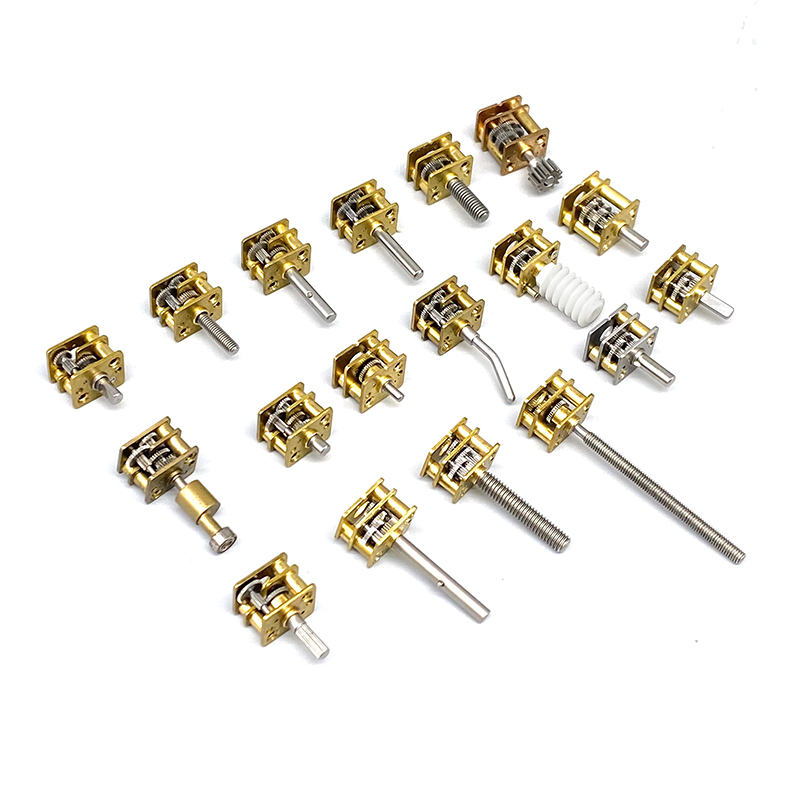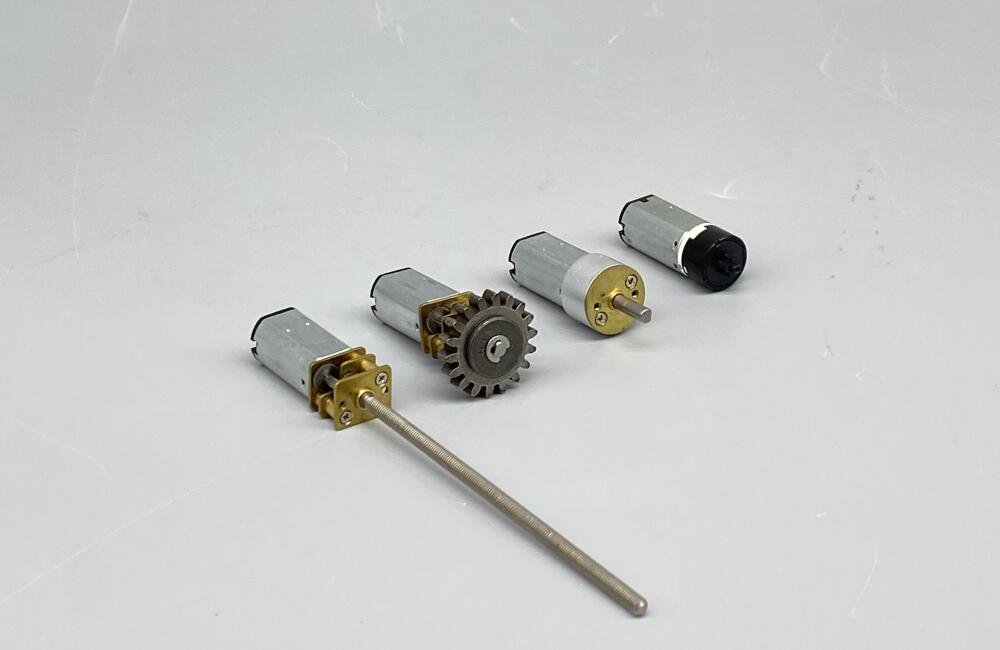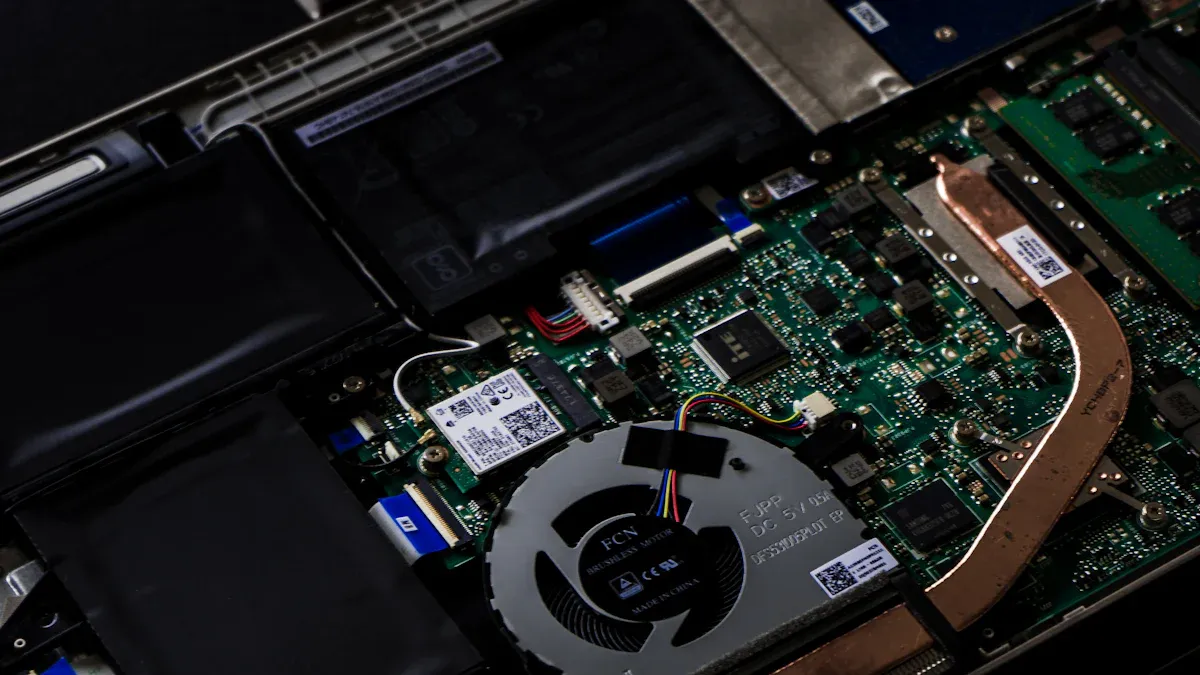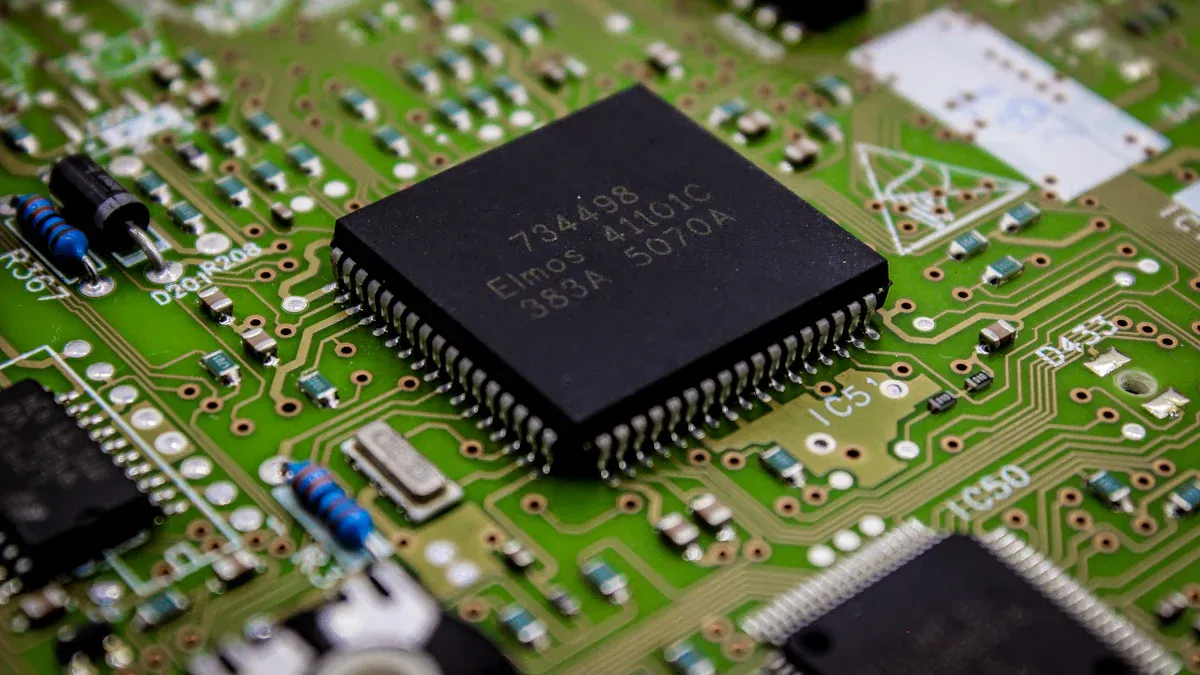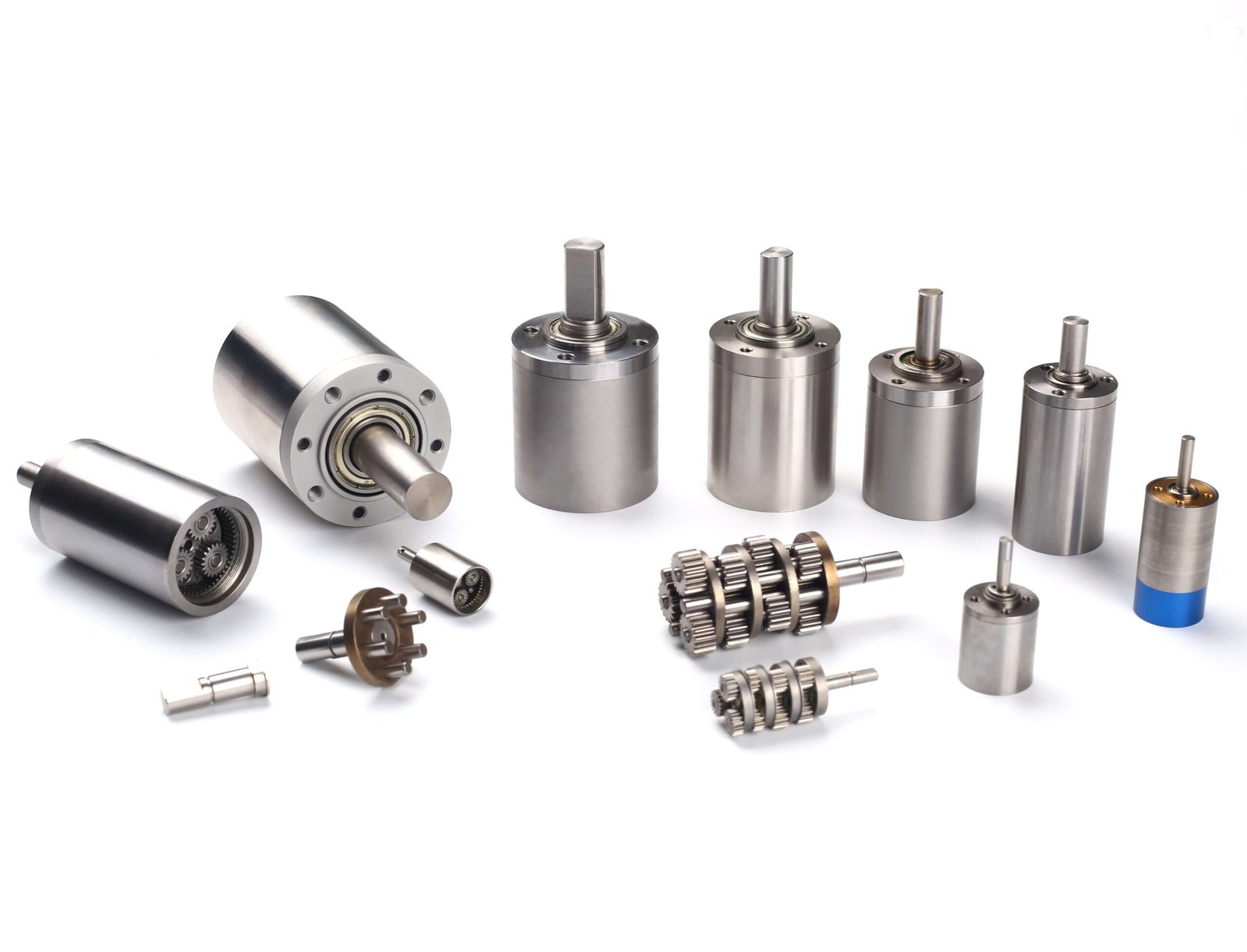Choosing the right 5v dc motor for your project starts with understanding your needs and matching key specifications. When you select a dc motor 5 volt that fits your application, you boost efficiency and reliability. INEED Motors’ Spur Gear Motors offer dependable solutions for many electric motor projects.
Understanding performance factors simplifies your decision.
Balancing torque, speed, and voltage supports long-term success.
Careful attention to specifications helps prevent mechanical failure.
Key Takeaways
Identify your project needs by considering voltage, torque, and power compatibility. This helps avoid overheating and extends motor lifespan.
Match motor specifications to your application. Evaluate torque, speed, and size to ensure compatibility with your control system and power supply.
Consider project constraints like space and budget. Ensure the motor fits your device and works with your power supply to avoid performance issues.
Plan for regular maintenance to keep your motor running smoothly. Clean, lubricate, and monitor temperature to prevent unexpected failures.
Use a checklist to guide your motor selection. Review voltage, size, efficiency, and compatibility to ensure optimal performance.
Key Specs for DC Motor 5 Volt
When you select a dc motor 5 volt for your project, you need to focus on several critical specifications. These specs help you achieve reliable performance and ensure load compatibility. INEED Motors’ Spur Gear Motors offer a wide range of options, making them a versatile choice for many applications.
Voltage, Current, and Power
You must check the rated voltage and current for your 5v dc motors. These values determine how well the motor matches your power supply and motor driver. If you use the wrong voltage or exceed the current rating, you risk overheating or damaging your electric motor. The power rating shows how much work the motor can perform over time. This helps you predict energy consumption and choose the right power supply for your load.
Specification | Description |
|---|---|
Rated Voltage (V) | Ideal operating voltage range |
Rated Current (A) | Current draw under normal load |
Stall Current (A) | Maximum current if the motor stalls |
Power (W) | Work performed over time |
Current at no load: 70mA (max)
Loaded current: 250mA (approx)
Speed (RPM) and Torque
Speed and torque requirements play a major role in motor sizing. You need to know how fast the motor spins and how much force it can deliver. For robotics and automation, you often need high torque at lower speeds. Gearboxes in 5v dc motors help increase torque while reducing speed, which improves positional accuracy.
DC gear motors are ideal for robotics where strength and controlled motion are required. By reducing the speed, you also increase the positional accuracy of the motor.
Specification | Value |
|---|---|
Speed (RPM) | 0.5 to 5000 rpm |
Pull-out Torque | More than 190 gf.cm |
Holding Torque | More than 450 gf.cm |
Size and Form Factor
Motor sizing affects how easily you can fit the motor into your device. Compact 5v dc motors, like INEED Motors’ N20 micro gear motor, work well in small robots, toys, and other tight spaces. You should measure the available space and choose a motor diameter and length that fits your design.
Feature | Description |
|---|---|
Diameter | 12mm to 37mm |
Compact Size | Easy integration into small devices |
Applications | Mini robots, small fans, toys |
Duty Cycle and Efficiency
You must consider how often your motor will run. Continuous operation means the motor runs without stopping, while intermittent duty involves periods of rest. INEED Motors’ Spur Gear Motors offer high efficiency, with ratings from 95% to 99%. High efficiency reduces energy loss and keeps your motor running cooler.
Continuous operation: Runs without interruption
Intermittent operation: Alternates between working and resting
Efficiency: Up to 99% for spur gear motors
When you match these specs to your project, you improve reliability and performance. You avoid problems like stalling, overheating, or mechanical failure. Always review torque requirements, load compatibility, and motor sizing before making your final choice.
DC Motor Selection Steps
Choosing the right 5v dc motors for your project involves several important steps. You need to define your project needs, match the motor specs to your application, consider any constraints, and evaluate maintenance requirements. Following these steps helps you make a smart dc motor selection and ensures your project runs smoothly.
Define Project Needs
Start by identifying what your project requires from a dc motor 5 volt. You should look at the voltage, torque, power compatibility, and voltage range. These factors help you avoid overheating and extend the motor’s lifespan. Use the table below to organize your thoughts:
Aspect | Description |
|---|---|
Voltage Needs | Power supply required for optimal motor operation |
Torque Strength | Rotational force the motor can generate |
Power Compatibility | Ensures voltage aligns with power source to prevent damage |
Voltage Range | Helps avoid overheating and extends lifespan |
You also need to consider peak and average power, load regulation, and line regulation. Make sure the motor’s physical volume and weight fit your device. Cost matters too, especially when you compare cost per watt for both peak and regular power output. Look for extra features like diagnostic LEDs or rapid discharge capabilities. Protection features such as in-rush current limiting and safeguards against overheating or short circuits are important for long-term reliability.
Tip: Always check the DC output voltage level to ensure efficient operation of your 5v dc motors.
Match Specs to Application
Once you know your project needs, match the motor specifications to your application. Think about the torque, speed, power consumption, and size. Make sure the motor works with your control system and power supply. INEED Motors offers customization options that help you tailor the motor to your exact requirements. The table below shows how you can adjust features to fit your project:
Customization Feature | Description |
|---|---|
Output Shaft | Select the output shaft type to fit your design |
Gear Ratios | Customize gear ratios for optimal performance |
Motor Specifications | Tailor torque, speed, and power to match your application |
You should always consider the load your motor will handle. If your project needs high torque or precise speed control, choose a motor with the right gear ratio and output shaft. Matching these specs helps you avoid problems like stalling or overheating.
Consider torque requirements for your project.
Evaluate the speed needed for your application.
Assess the power consumption of the motor.
Take into account the size and weight of the motor.
Ensure compatibility with your control system and power supply.
Consider Constraints
Project constraints can affect your dc motor selection. Space, power supply, and budget all play a role. Make sure the motor fits within your device and works with your motor driver. Battery type and configuration can change the weight and cost of your project. Watch out for voltage drop issues, which can affect performance and even damage the motor if not managed properly.
Match motor specs with the capabilities of your motor driver and power supply.
Choose battery types and configurations that suit your budget and weight limits.
Monitor for voltage drop issues to protect your 5v dc motors.
Note: Proper planning helps you avoid costly mistakes and ensures your dc motor 5 volt performs as expected.
Evaluate Maintenance
Maintenance keeps your 5v dc motors running smoothly over time. Choose a motor designed for continuous operation with a high-duty cycle. Brushless motors often provide better efficiency. Use a stable and clean power supply that meets the motor’s voltage and current needs. Install and mount the motor properly to avoid vibration and protect against dust. Monitor the motor’s temperature and keep it within the specified range.
Regular maintenance includes cleaning brushes, lubricating bearings, and checking wiring. These steps help you prevent unexpected failures and extend the life of your dc motor 5 volt.
Select motors built for continuous operation.
Use a clean and stable power supply.
Ensure proper installation and mounting.
Monitor temperature during operation.
Clean brushes, lubricate bearings, and check wiring regularly.
Keeping up with maintenance helps your 5v dc motors deliver reliable performance for years.
By following these steps, you make a smart dc motor selection and set your project up for success. INEED Motors’ customization options let you match specs to your unique needs, so you get the best results for your application and load.
Applications for 5V DC Motors
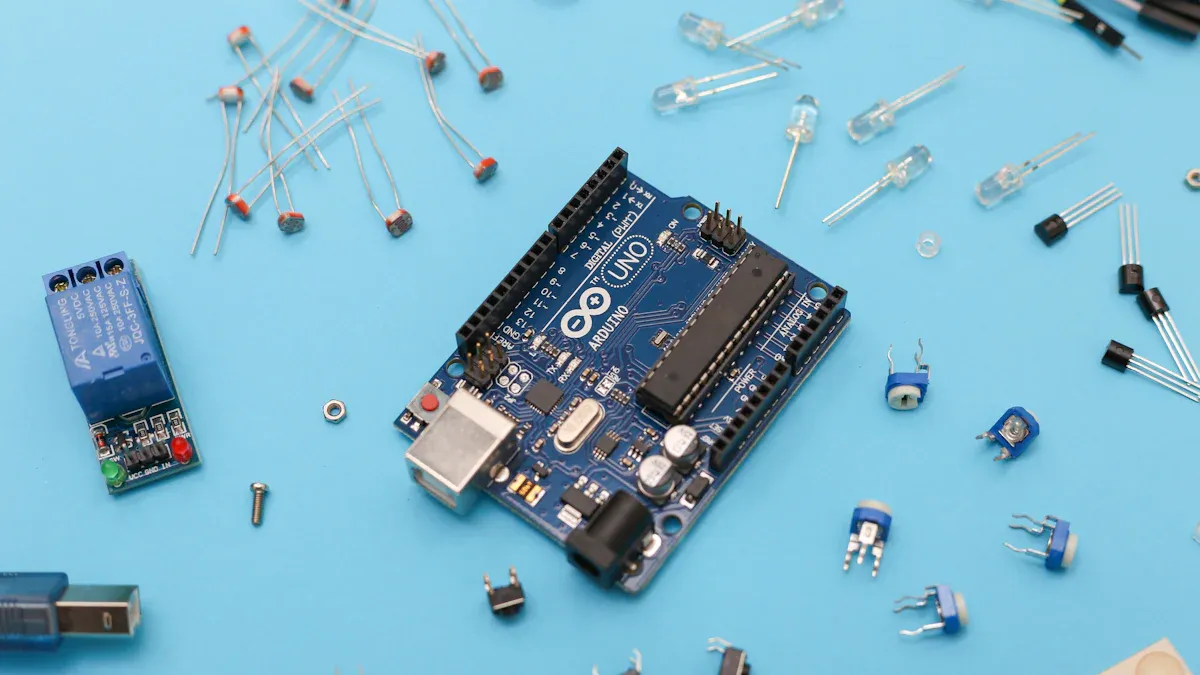
5v dc motors power many devices you use every day. You find them in toys, small appliances, and even in industrial machines. Their low voltage and compact size make them perfect for projects where space and efficiency matter. Let’s explore some typical use cases and see how you can use these motors in your own diy project.
Robotics and Automation
You often see 5v dc motors in robotics and automation. These motors drive robotic arms, mobile robots, and robotic vehicles. Their high power-to-weight ratio and low power consumption help you build efficient machines. You can use them in mini robots, hobbyist projects, and even professional robotics. The N20 micro gear motor from INEED Motors works well in compact robots. Its small size and integrated gearbox let you move robotic arms or adjust camera lenses with precision. When you need to handle a specific load in a tight space, this motor gives you the strength you need.
Robotic arms
Mobile robots
Robotic vehicles
Mini robots
Hobbyist and professional robotics
Tip: Choose a motor with the right torque and speed for your robot’s tasks.
DIY Electronics
If you enjoy building gadgets, 5v dc motors are a great choice for your diy project. You can control these motors with simple circuits. For example, you might use a MOSFET IRF540 for speed control or an IC 555 timer for basic motor management. The table below shows some common circuits:
Circuit Type | Description |
|---|---|
MOSFET IRF540 | Allows linear speed control using a potentiometer |
IC 555 | Simple speed controller circuit design |
IC 4093 | Another variant for speed control |
IC 741 | Uses operational amplifier for control |
IC 556 | Dual timer circuit for motor control |
You can start and stop the motor, switch directions, and add endstops for safety. These features help you create battery-powered projects that are both safe and reliable.
Small Devices
Many small devices rely on 5v dc motors for smooth operation. You find these motors in robotic arms, automated fans, line-following robots, and LEGO builds. The N20 micro gear motor fits well in these devices because it handles low-torque tasks and fits into tight spaces. When you need to move a small load or create motion in a compact device, this motor delivers consistent results.
Robotic arms
Automated fans
Line-following robots
LEGO builds
You can use 5v dc motors in many creative ways. Their flexibility and reliability make them a smart choice for your next project.
Optimizing Low-Voltage Motors
Avoiding Mistakes
When you work with low-voltage motors, you need to watch out for common mistakes that can affect performance and reliability. Many users of 5v dc motors face issues because they overlook basic steps. Here are the most frequent mistakes you should avoid:
Overload of Motor Windings
Loose Windings
Dirty Commutators
Bad Bearings
Degraded Winding Insulation Breakdown
Motor Bearing Failure
Excessive Vibration
Debris and Contamination
Improper Installation
Not Following Manufacturer’s Instructions
You can prevent these problems by following the guidelines from the manufacturer and checking your motor regularly. Proper installation and routine cleaning help you keep your low-voltage motors running smoothly.
Enhancing Efficiency
You want your low-voltage motors to deliver the best results. INEED Motors’ spur gear motors reach efficiency ratings between 95% and 99%. High efficiency means less wasted energy and lower operating costs. You can boost efficiency and extend the life of your 5v dc motors by using these strategies:
Choose copper windings for better conductivity and aluminum for lighter weight and improved cooling.
Select the right motor size for your application. A motor that matches your load will not overheat or waste energy.
Set up a regular maintenance schedule. Clean and lubricate your motor to keep it working well.
Make sure your motor has enough cooling. Good airflow prevents overheating and supports low power consumption.
Tip: Efficient low-voltage motors help you achieve ease of control and reliable operation in your projects.
Testing and Troubleshooting
Testing your low-voltage motors before and during use helps you catch problems early. You should check for smooth rotation, listen for unusual noises, and monitor temperature. If your 5v dc motors show signs of vibration or overheating, inspect the bearings and windings. Clean any debris and make sure all connections are secure. You can use a multimeter to measure voltage and current. This helps you confirm that your motor receives the right power and handles the load safely.
A simple troubleshooting table can guide you:
Issue | Possible Cause | Solution |
|---|---|---|
Motor overheating | Overload, poor cooling | Reduce load, improve airflow |
Unusual noise | Bad bearings, debris | Clean, replace bearings |
Low speed | Dirty commutator | Clean commutator |
Vibration | Loose installation | Tighten mounting |
You can optimize your low-voltage motors by staying alert to these issues. Regular testing and quick troubleshooting keep your motors efficient and reliable. When you focus on low power consumption and ease of control, your project will run smoothly for a long time.
5V DC Motors Checklist
Quick Reference Guide
You can use this checklist to make sure you select the right 5V DC motor for your project. Review each point before you make your final decision. This guide helps you avoid common mistakes and ensures your motor works well in your application.
Project Requirements: Define what you need from your motor. List the voltage, torque, speed, and power your project demands.
Mechanical Compatibility: Check the motor’s size, shaft type, and mounting style. Make sure these match your device and fit the available space.
Electrical Compatibility: Confirm the motor’s voltage and current ratings. Your power supply and motor driver must support these values.
Power Supply: Verify that your power source delivers stable 5V and enough current. This prevents overheating and damage.
Driver Selection: Choose a motor driver that matches the motor’s voltage and current. The driver should handle the load without issues.
Gear Ratio: Understand how the gear ratio affects speed and torque. Select a ratio that fits your application’s needs.
Environmental Protection: Check the IP rating if your project faces dust or moisture. This keeps your motor safe in harsh conditions.
Efficiency: Look for motors with high efficiency, such as INEED Motors’ spur gear motors. High efficiency reduces energy loss and heat.
Maintenance Needs: Plan for regular cleaning and inspection. This extends the motor’s life and keeps performance steady.
Tip: Always double-check the fit and compatibility before installation. A careful review saves time and prevents costly errors.
Checklist Item | What to Check |
|---|---|
Voltage & Current | Matches power supply and driver |
Size & Mounting | Fits device and mounting method |
Shaft Type | Compatible with gears or wheels |
Gear Ratio | Delivers needed speed and torque |
IP Rating | Suitable for environment |
Efficiency | High (95%-99%) for best results |
You can print or save this checklist for quick reference during your project planning and assembly.
You can select the right 5V DC motor by focusing on key characteristics. The table below highlights what you should check:
Characteristic | Description |
|---|---|
Plan for this to avoid power loss or damage. | |
Torque | Make sure the motor can handle your load. |
Stall Current | Confirm your power supply supports this value. |
Use the checklist to guide your choice. Consider INEED Motors for reliable options. For advanced projects, you may want to explore H-bridge control or pulse-width modulation. Expert advice can help with complex needs.
FAQ
What factors should you check before buying a 5V DC motor?
You need to check voltage, current, torque, speed, and size. Make sure the motor matches your power supply and fits your project. Review efficiency ratings for better performance.
Can you customize INEED Motors’ Spur Gear Motors for your project?
Yes, you can request custom gear ratios, shaft types, and brush materials. INEED Motors offers engineering support to help you match the motor to your exact needs.
How do you prevent overheating in 5V DC motors?
You should use a stable power supply and avoid overloading the motor. Clean the motor regularly and ensure proper ventilation. Monitor temperature during operation.
Tip: Always check the motor’s rated current to avoid overheating.
What are common uses for the N20 micro gear motor?
Mini robots
Small fans
DIY electronics
Compact devices
This motor works well when you need low torque and a small form factor.
How do you know if your motor is efficient?
Efficiency (%) | Description |
|---|---|
95-99 | High efficiency, less energy loss |
You can check the manufacturer’s datasheet or ask for efficiency ratings before purchase.
